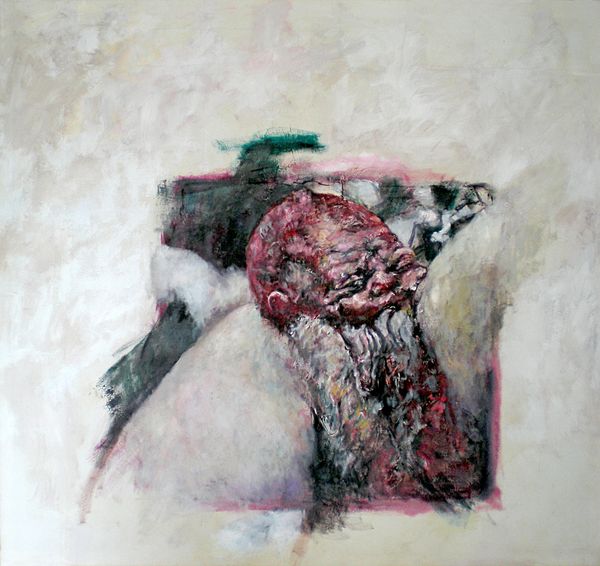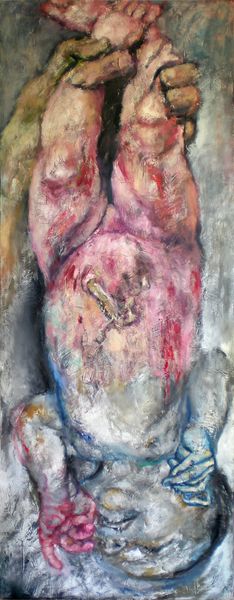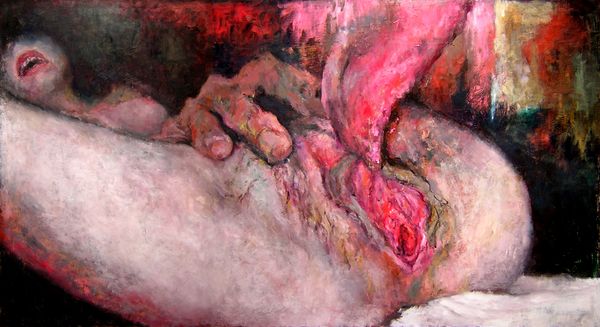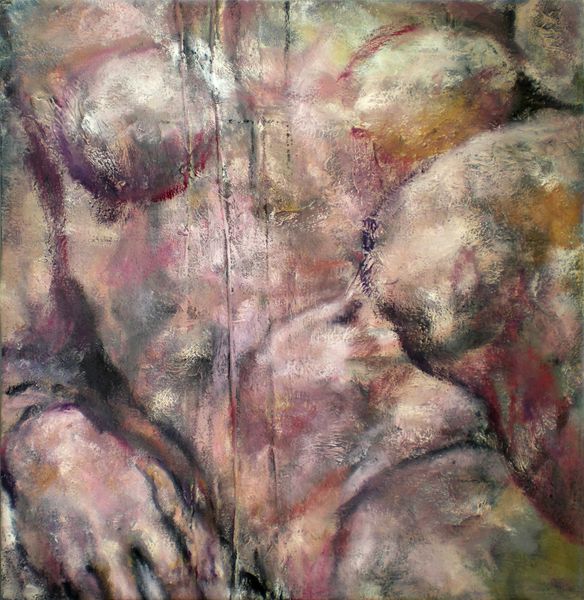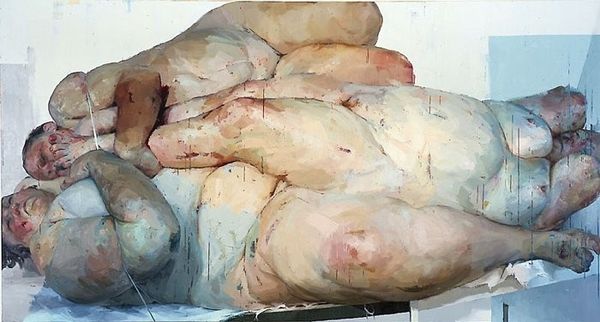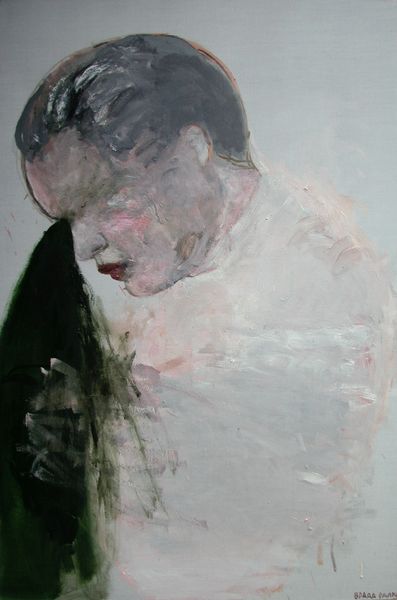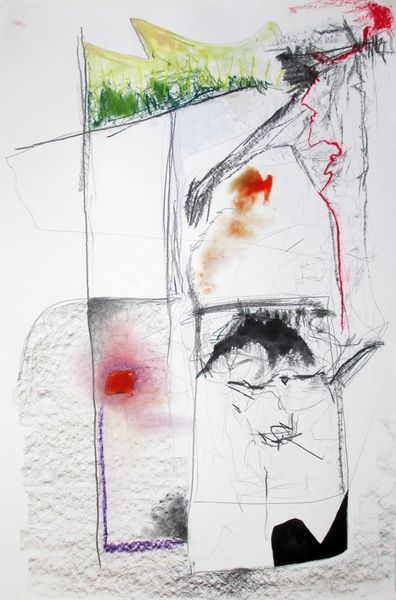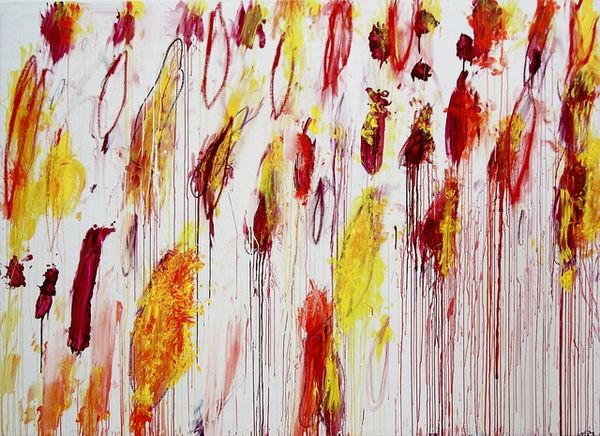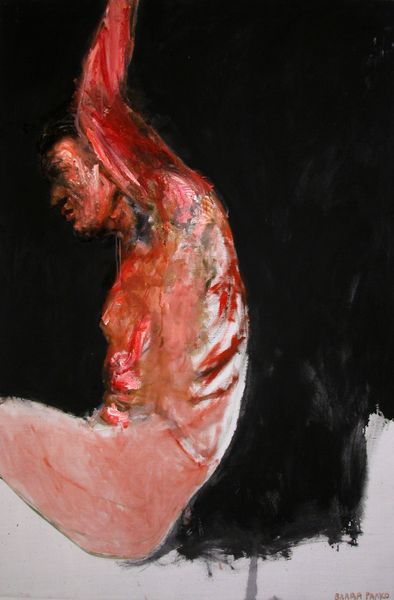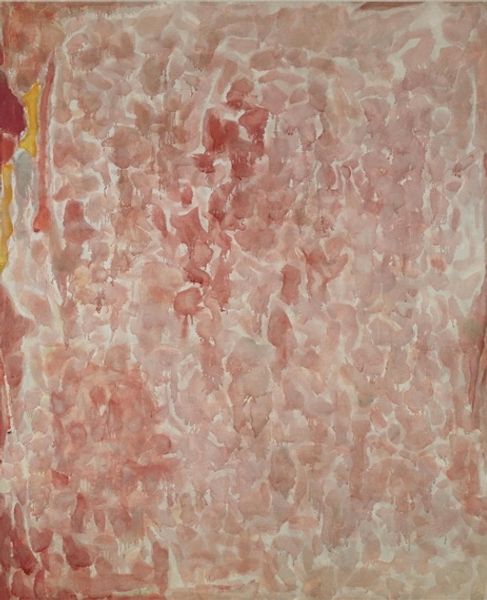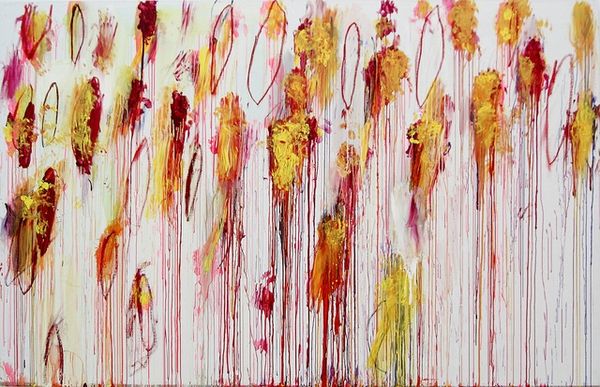
Copyright: Carmen Delaco,Fair Use
Editor: So, this is Carmen Delaco's "Romulus & Remus," created in 2012 using oil paint and charcoal. It's...intense. The colors are unsettling, and the depiction is quite grotesque. What do you see in this piece? Curator: What strikes me is how Delaco reinterprets a founding myth, the story of Romulus and Remus, through a decidedly contemporary and challenging lens. These aren't the idealized infants suckling a she-wolf. Delaco confronts us with the brutal realities of power, conflict, and the legacy of violence embedded within even foundational narratives. Considering this was created in 2012, what social or political events might have influenced Delaco’s perspective? Editor: That’s a really interesting way to look at it. I hadn’t thought about contemporary events influencing the myth itself, beyond just Delaco’s style. Maybe the financial crisis, or ongoing conflicts? How would that affect the way we see these figures? Curator: Exactly. Think about the anxieties and uncertainties of the time. The original myth, however violent, offers a narrative of origin and nation-building. Delaco strips that away, leaving us with vulnerability and a sense of unease. Consider the stark monochrome palette, which evokes historical images but also a sense of decay. Could that be read as a critique of nationalistic myths themselves? Is Delaco suggesting they’re inherently destructive? Editor: Wow, I never thought about it that way, but the "vanitas" tag also makes sense now. I was just seeing it on a surface level as death or emptiness, but linking it to nationalism... That opens it up a lot. It’s not just about these figures but maybe about the dangers of any foundation built on conflict. Curator: Precisely. And by refusing to glorify or romanticize them, Delaco forces us to confront uncomfortable truths about our own origins and the stories we tell ourselves. Considering the titles “Romulus and Remus,” do you see two distinct individuals or a conjoined entity expressing internal tensions? Editor: That’s something I need to consider more. It’s really made me think about the responsibility of the artist in confronting societal narratives, rather than just representing them. Thanks for your insights. Curator: And thank you for engaging so thoughtfully with the piece. It is through such dialogue that we can begin to understand the complex layers of meaning within Delaco’s work.
Comments
No comments
Be the first to comment and join the conversation on the ultimate creative platform.
